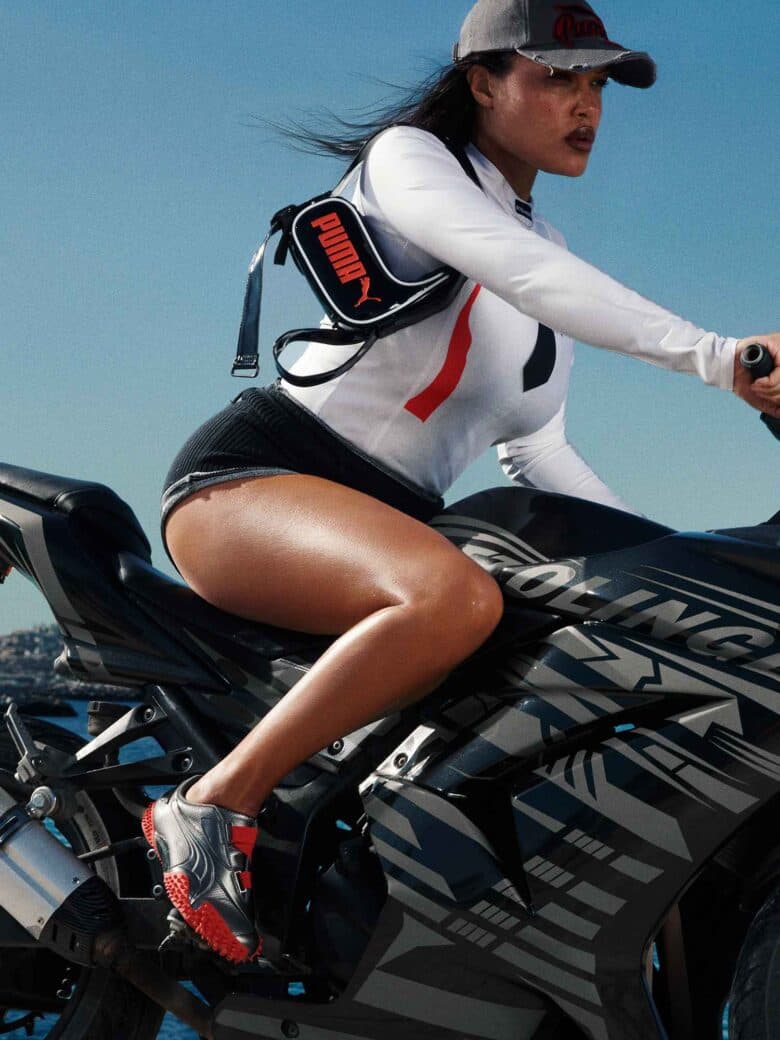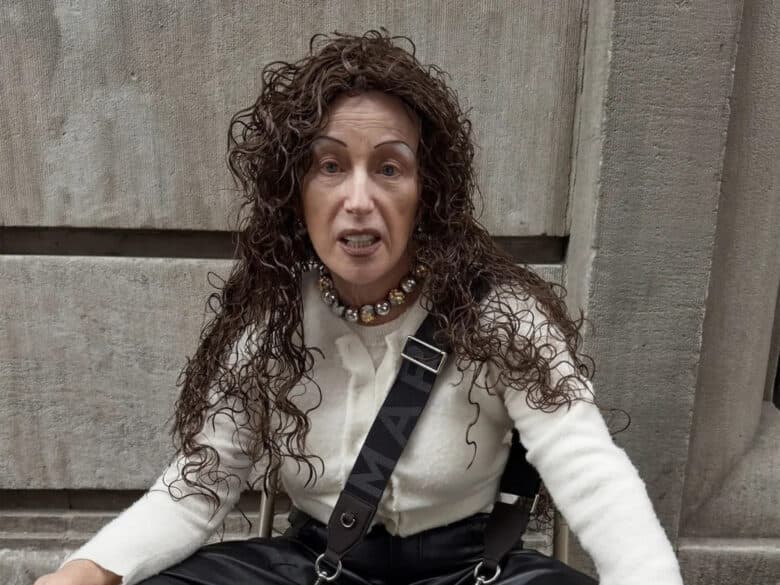The ladette is tipped to be fashion’s new darling — but will it be a call for change, or a new movement altogether?

Blokecore was one of 2022’s major trends. You know, gorp meets football-inspired wear, with a sprinkling of baby tees and pixie cuts. It had its fair share of haters as well, who were not shy in keeping it a subcultural British fashion trend that should definitely not be adopted by American counterparts, or by Depop girlies who didn’t truly understand the lifestyle behind the fashion. But in this aesthetic takeover sat ladette, the predecessor for women that proved a phenomenon when it came to deconstructing feminine ideals. So as trend predictions resurface for the new year, we’re questioning what the ladette truly means, and if it is still as applicable in 2023 as it was in the late 90s and 00s. Have we moved past the need to bring it back? Or is it still as relevant as it was then?
The ladette, to put it simply, was women doing what men did. Drinking heavily, acting boisterous, taking their clothes off and saying what they wanted when they wanted to. It was a much needed form of relief – and entertainment – when it came to bringing people into the new millenia, and deconstructing gender stereotypes from the generations that came before. They were cheeky and flirty, and donned mini skirts and sportswear inspired pieces with bits of glam and maybe a glimpse of knickers on show, but most importantly, they were geared up to take on anything that any man could do, but do it better. Amongst all the progression however, there was a serious backlash due to the threat of society’s capacity for social, and gender, disorder. The humour for example, was first adopted as a means of equalising the jokes between men and women, but many felt it was also a platform for more misogyny masked as friendly banter.
The definition of a ‘lad’ in the Oxford languages uses the example of “he’s one of the lads – a top bloke”. The lad persona is simply met, even in its definition, with cheek-chappy adoration and a ‘Jack the lad’ type of naughtiness. But when women took it on the media were outraged. When Denise van Outen, for example, took an ashtray from Buckingham Palace, papers like The Daily Mail made the incident into a national scandal and took on ladette antics headfirst. The tabooed themselves included the likes of van Outen, Zoe Ball, Sarah Cawood the Spice Girls and looked to Channel 4’s The Girlie Show to encapsulate the zeitgeist. But amongst all its out drinking, the media felt it was feminism gone too far. The double standards that were strikingly obvious in the media at the time were whittled down to all blokey personas causing trouble but ultimately teetered on the idea that women being so perverse was a threat to the masculine ideals of men. God forbid they could ever be out-boozed.
Nowadays, outdrinking men doesn’t seem to be enough for the new-age ladette. The pressing issues of violence against women and inequality call for protests and bills, change and movements. This isn’t to say that ladette wasn’t a movement, and it was a vital part of the subcultural shift. But it dragged with it unreasonably conservative ideals that are now forever cemented to the ladette. These negative portrayals were sensationalised to include heavy drinking promoting anti-social behaviour, and sexual promiscuousness being inappropriate for TV at the time, and although this was never an issue for the media in terms of male personalities in the spotlight, many ladette-inspired female figures were being crucified for it.
So as we head into the new year with promises of pints and cigarettes, masc meets fem sportswear and mini hairdos, it only seems reasonable to question the hate that it will drag along. Maybe we have moved past the need to bring back ladette as a means of feminism, or perhaps it will always be a satisfying equaliser. The movement has been taken as an aesthetic and not necessarily recognised for its manifestation as a product of integral social development.
It must also be acknowledged that, in 2023, the queer voice may interpret the ladette as a means of expression. The whole aesthetic simply can’t sit as rigidly as it did in the 90s, 00s and perhaps even in 2022, and will hopefully see a progression into a more gender-fluid means of fashion. 2023 may hold ladette as an equaliser, but it will also adopt what it means to be masculine and feminine in the lad-sphere in a whole new manner.
Will we see the adoption of the lad sit beside tolerance and understanding? Will it simply be an aesthetics branch of blokecore that forgets its origins? Or will it be a whole new fashion movement that adopts queerness and feminism to bring about change through fashion? 2023 holds the answers, but we hope the all-drinking, all-dancing hedonism of the ladette isn’t forgotten and is acknowledged in its progressive roots for the modern ladette to take on for themselves.

